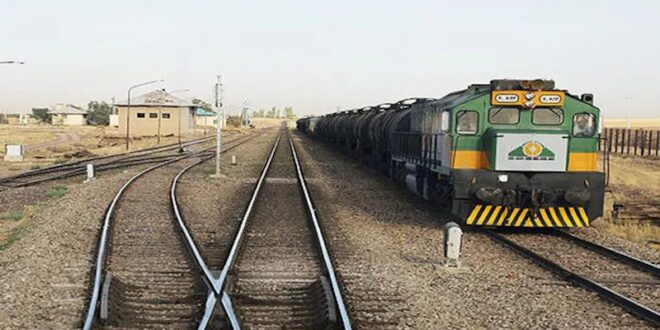Isolated by the West, Russia and Iran are looking to ease sanctions pressure by forging a new economic corridorthat boosts bilateral trade and connects them with fast-growing India – but the project’s effectiveness could yet be undermined by sanctions as well as logistical challenges and geopolitical tensions.
The International North-South Transport Corridor (INSTC), a 7,200 km road, rail and maritime link, runs from St Petersburg through southern Russia, Azerbaijan, Iran, then on to Mumbai. The corridor, which includes a section across the Caspian Sea and an additional route via Kazakhstan and Turkmenistan, has been talked about for a number of years but only really gained momentum since the Ukraine War. Moscow sees the corridor as a means of replacing European trade lost to sanctions. For all those involved, the project substantially reduces transport costs by bypassing the Suez Canal.
The ramping up of US and EU sanctions following the invasion of Ukraine has spurred Russia to bolster trading linkswith Iran and reach out to India, whose Russian imports have quadrupled. Delhi has defied the West by maintaining economic ties with Moscow and has ambitions to use INSTC to strengthen commercial engagement with Central Asia and Europe.
Corridor countries are investing heavily in the enterprise, Russia and Iran reportedly to the tune of $25 billion. The first shipments began last year – the annual cargo transit target 30 million tonnes by 2030. But there are big obstacles.
The project remains incomplete, a fact highlighted by Russia’s close ally Belarus. While wanting to join INSTC, Belarussian prime minister, Roman Golovchenko, has spoken of “the need to address the problem of missing infrastructure.” One of the main gaps is the long-delayed 164 km Rasht-Astara railway line in Iran. Funding issues have held up its completion, though now Russia has apparently agreed to finance the work.
The Iranian economics daily the Financial Tribune cites other Iranian logistical issues, such as a major shortage of rail cargo wagons and road transport capacity as well as bureaucratic obstacles that slow down transit traffic. The publication also points to the small size of the Iranian fleet in the Caspian Sea; the limited number of roll-on/roll-off ships trading between Iran and Russia along the waterway; the fact that the southern Russian port of Astrakhan freezes in the winter, seriously restricting access; and the lack of dredging in the Volga River and the Volga-Don Canal decreasing ship-loading capacity.
The Eurasian Development Bank says over 40 non-tariff and other barriers impede the effective functioning of the corridor. Bank analysts say its competitiveness is significantly affected by missing links and infrastructure bottlenecks together with the lack of harmonised border crossing procedures, paper-based transport documents, and lack of an effective coordination mechanism for managing the project (including tariffs as well as freight and vehicle insurance).
While seen by some as a sanctions-evasion corridor for Russia and Iran, US and EU economic restrictions could severely curb non-Russian and non-Iranian investment in INSTC and its access to Europe.
US secondary sanctions – applying to non-American individuals – were re-imposed on Tehran after the US withdrew from the Iran nuclear deal and other such measures can be activated against Moscow. Those targeting Tehran have already frustrated Azerbaijani funding of the Rasht-Astara rail link. India too has been impacted by secondary sanctions on Iran. Though granted exemptions for the development of the Iranian port of Chabahar which it wants to turn into a key corridor hub, procurement of equipment from private infrastructure companies has been challenging, according to a paper published by the Observer Research Foundation. And since EU restrictions on Russia and Moscow’s counter-measures have led to a plunge in Russian trade with the bloc, India’s hopes of using INSTC to trade with Europe do not look promising.
But arguably the biggest potential threat to the project is political friction between Azerbaijan and Iran. Tensions have grown since the Azeris defeated the Armenians in the 2020 Nagorno-Karabakh war, in the process regaining territory on the border with Iran, a close ally of Armenia. That shifted the balance of power in the region, commented South Caucasus analyst Fuad Shabazov in the regional current affairs title Amwaj. Tehran, he says, has also become wary of both Baku’s ever closer ties with Israel and plans to run a corridor across Armenian territory to the Azeri exclave of Nakhchivan exclave, which could cut Iran off from Armenia.
The mutual distrust has seen Tehran and Baku hold military exercises close to their border, with Azerbaijan even questioning the territorial integrity of its neighbour. Other incidents have set off alarm bells too, the most potentially combustible an attack on the Azeri embassy in Tehran in January – Baku holding Tehran responsible. Neither side wants conflict, though, and they clearly have much to gain from making INSTC work. They recommitted to doing so at a summit in Baku last September, but the geopolitical tensions do not bode well. Armenia, sensing an opportunity, is already looking to interest India in a rival corridor that bypasses Azerbaijan.
These are still early days for INSTC. Russia and Iran have already made great play of the corridor, but for now its propaganda value as a riposte to sanctions is arguably more important than its actual economic benefit. The project’s implementation is so fraught with risks and challenges that it may well struggle to deliver its ambitious cargo transit target, especially if a tightening of the sanctions regimes against Russia and Iran leaves them with fewer funds to invest in the route.
 Eurasia Press & News
Eurasia Press & News


